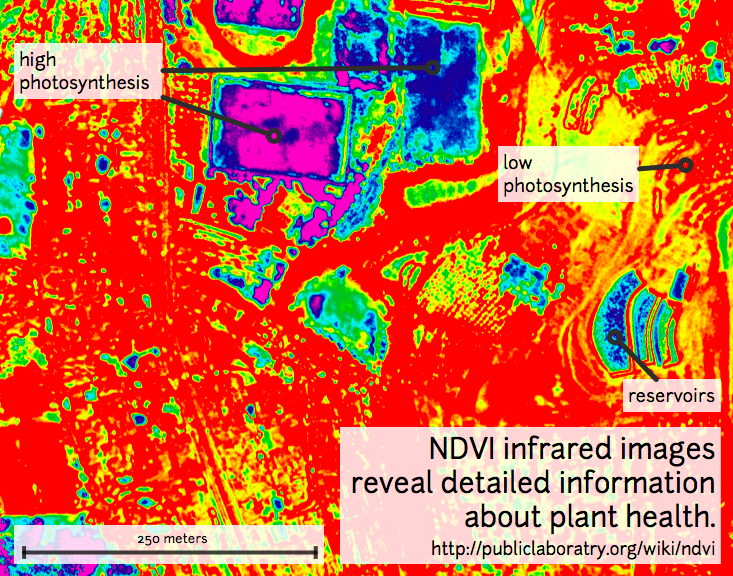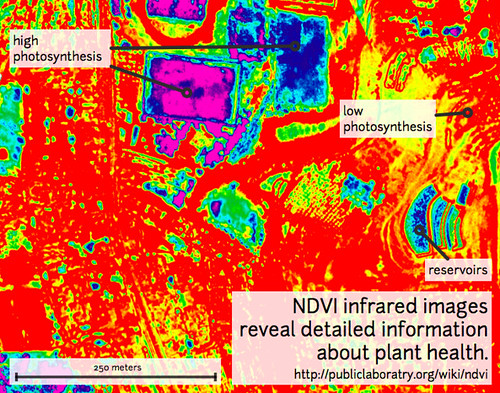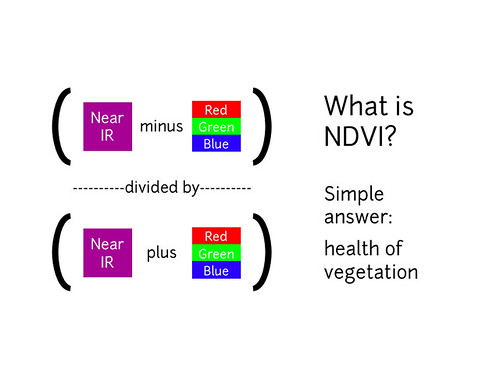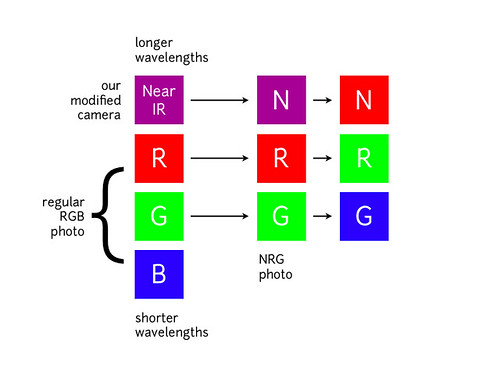
NDVI
What is NDVI? What is NRG?
We've been working a lot on capturing infrared imagery, and producing NDVI images such as the one above using our DIY near-infrared camera setup.
What exactly are these images we're trying to make? What do they tell us about vegetation, and why? These diagrams should help to understand what it is we're doing and why these are good ways to analyze plant life.
Taking photos with IR information can be used to generate NDVI (which stands Normalized Difference Vegetation Index) and for NRG images. NDVI and NRG are methods taking the information in pictures and quantifying the amounts of infrared and other wavelengths of light reflected from vegetation. This can be used to evaluate health of vegetation by comparing ratios of blue and red light absorbed versus green and IR light reflected. It's a snapshot of how much photosynthesis is happening. This is helpful in assessing vegetative health or stress. (Read more here: https://www.agronomy.org/publications/jeq/articles/36/3/832)
NDVI is a ratio which tries to emphasize photosynthesis while filtering out sun glare. The above equation is run for every pixel, using source data from an infrared photo and a visible light photo, like this pair.
The result can be false-colored to make the high-photosynthesis areas more clear -- like the top image on this page -- and used to examine where plants are and how healthy they are.
NRG imagery
We're also interested in producing NRG imagery (like the above image), where Near-Infrared, Red, and Green are used to compose a picture instead of the usual Red, Green, and Blue. This diagram explains the swapping, which allows us to 'see' infrared as if it were a normal color:
In NRG images, the deeper and clearer the red color, the denser and healthier the vegetation (more or less).



